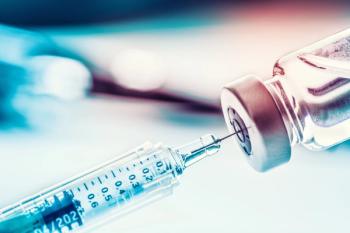
- Consultant for Pediatricians Vol 9 No 10
- Volume 9
- Issue 10
Should Pediatricians Be Vaccinating the Parents of Patients (eg, With Tdap and Flu Vaccines)?
Newborns and young infants represent the population most at risk for the burden of severe pertussis-related and influenza-related morbidity and mortality. The sources of these infections in infants are often unclear but are probably adolescents and adults (pertussis) and children and adults (influenza)
PRO:
KATHRYN S. MOFFETT, MD
Newborns and young infants represent the population most at risk for the burden of severe pertussis-related and influenza-related morbidity and mortality. The sources of these infections in infants are often unclear but are probably adolescents and adults (pertussis) and children and adults (influenza).1
Strategies to protect infants include indirect (primary and booster immunizations for siblings and parents) and direct (vaccination of infants soon after birth) prevention measures. Unfortunately, direct immunization against influenza is not possible until an infant is 6 months old; full protection is reached weeks after the second booster vaccination. For pertussis, full protection from immunization may not be reached until completion of the primary vaccine series, when the child is a toddler. Cocooning the infant by immunizing all potential contacts is probably the most effective indirect strategy to protect these young susceptible children from pertussis and influenza.
Successful indirect prevention measures have involved postpartum Tdap vaccination of mothers and administration of free influenza vaccine to family members in the neonatal ICU.2,3 A more comprehensive solution is to offer influenza and Tdap vaccines in the pediatrician's office; this allows for increased access to vaccination for new fathers and mothers as well as other family members. Approaching families and offering Tdap and influenza vaccinations during routine well-infant and child visits canand shouldbe incorporated easily into all primary care office settings.
In-office vaccination of parents has been shown to be feasible, affordable, and convenient.3,4 Protecting infants and children from pertussis and influenza allows them to blossom and grow into the healthy butterflies of our future.
REFERENCES:
1. McIntyre P, Wood N. Pertussis in early infancy: disease burden and preventive strategies. Curr Opin Infect Dis. 2009;22:215-223.
2. Burke BL Jr, Nesmith CC, Ott RE, Hedrick ML. Through with the flu: how free family and caregiver immunization protects sick neonates. Clin Pediatr (Phila). 2010;49:20-23.
3. Coudeville L, van Rie A, Andre P. Adult pertussis vaccination strategies and their impact on pertussis in the United States: evaluation of routine and targeted (cocoon) strategies. Epidemiol Infect. 2008;136:604-620.
4. Walter EB, Allred N, Rowe-West B, et al. Cocooning infants: Tdap immunization for new parents in the pediatric office. Acad Pediatr. 2009;9:344-347.
CON:
STEPHANIE A. GRAYSON, MD
It is unreasonable for pediatricians to assume the responsibility to vaccinate the parents of their patients. In 1977, the American Academy of Pediatrics called for the universal immunization of all children for whom vaccines are not contraindicated.1 Throughout the subsequent decades, rates of immunization coverage have improved. However, the Healthy People 2010 goal of 90% coverage for the single dose of Tdap, for instance, has not been reached.2 The main explanations for this failure include disruptions of vaccine supply, high vaccine- acquisition costs, and inadequate reimbursement.
The flu vaccine shortage that occurred in the 2004 to 2005 influenza season is one example of a vaccine supply disruption. That shortage drove cooperative efforts between the private and public sectors and revealed the need to better identify and reach high-risk populations.3 In the summer of 2007, a cross-sectional mail survey of 1280 randomly sampled pediatricians and family physicians revealed dissatisfaction with reimbursement levels and increasing financial strain associated with providing immunizations.4 Third-payer payments do not cover the high cost of buying, storing, and administering vaccines, despite universal purchase programs.
In this environment, pediatricians must focus their limited and costly resources on their patients to ensure that they are fully immunized. The parents of their patients should be directed to their primary care physician for immunization coverage and for well-person examinations.
REFERENCES:
1. Hammer LD, Curry ES, Harlor AD, et al; Committee on Practice and Ambulatory Medicine; Council on Community Pediatrics. Increasing Immunization Coverage. Pediatrics. 2010;125:1295-1304.
2. US Department of Health and Human Services. Objective 14-27: increase routine vaccination coverage levels for adolescents. Healthy People 2010 (conference ed, in 2 vols). Washington, DC: US Dept of Health and Human Services; 2000.
3. McQuillan L, Daley MF, Stokely S, et al. Impact of the 2004-2005 influenza vaccine shortage on pediatric practice: a national survey. Pediatrics. 2009; 123:e186-e192.
4. Freed GL, Cowan AE, Clark SJ. Primary care physician perspectives on reimbursement for childhood immunizations. Pediatrics. 2009;124(suppl 5): S466-S471.
Articles in this issue
about 15 years ago
Snippets of Vaccine History: Success, Failure, and Controversyabout 15 years ago
Should the Topic of Thimerosal-Free Vaccines Be Discussed With Parents?about 15 years ago
Importance of Immunization: A Serious Disease Is Just a Plane Ride Awayabout 15 years ago
Juvenile Dermatomyositis Sine Myositisabout 15 years ago
Children With Gigantism, Hypotonia, and an Unusual Facial Appearanceabout 15 years ago
Shin Guard Dermatitisabout 15 years ago
Pompholyxabout 15 years ago
Orbital Cellulitisabout 15 years ago
To Tie or Not to Tie: The Dilemma of the Supernumerary Digitabout 15 years ago
Keratosis pilaris: Regimens for rough skinNewsletter
Access practical, evidence-based guidance to support better care for our youngest patients. Join our email list for the latest clinical updates.









